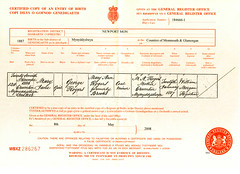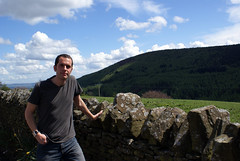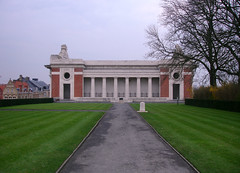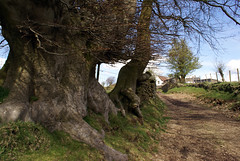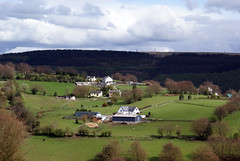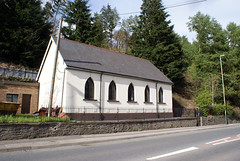I have been looking to find the first wife of Henry Jones for a while now having got it wrong first time round, albeit getting her first name right. I had – for reasons I cannot recall – listed her as being Mary Carey, but have since discounted that having found no matching record for their marriage.
In May, we visited the graveyard in Cefn-y-Crib which some of my Welsh ancestors are buried, and there found the grave of Henry Jones, which we could see was also the grave of his second wife Rachel and his first wife Mary and daughter Lydia.
The gravestone was a little damaged and the name of his first wife a little bit obscured, but one could nevertheless make out the name, Mari – the Welsh spelling of Mary. But what was her surname?
Having searched through the marriage indexes I came across a few possibilities that fitted in with the dates they would have been wed; Mary Lewis (1859), Mary Harris (1860) and Mary Issacs (1860). The last of these names rang a bell, and when I looked at the certificate for Henry’s marriage to his second wife Rachel, I saw the name Anne Isaac as being one of the witnesses.

Edmund Jones, the other witness, was the father of Rachel Jones (Jones was also her maiden name) and so I can only assume that both Henry’s parents were dead at the time. Of course, Isaac is not Isaacs but then spelling mistakes were made. Furthermore, when searching for Mary Issacs’ birth, I found only a few, all of whom would have been too young to have married Henry in 1860. Could the name have been wrong on the marriage index? Should it have been Isaac?
We know that she died in 1869 at the age of 27 and having searched for Mary Isaac in the birth records I found one Mary Isaac, born in the Pontypool district in 1843. But what of the other contenders; Mary Lewis and Mary Harris? There were a number of Mary Lewises born in 1842 (which one assumes is the correct year of birth), as indeed there were a number of Mary Harrises also born in 1842.

